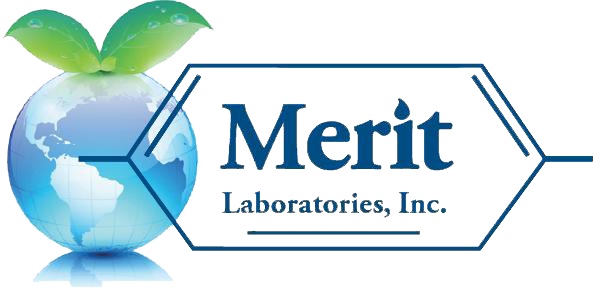Merit Laboratories has become the first laboratory to be certified by the State of Michigan for PFAS testing in drinking water. Merit’s certification for PFAS testing, using EPA Method 537.1, is through the Michigan Department of Environment , Great Lakes & Energy (EGLE).
NDAA Amendment Pushes DOD to adopt Michigan’s Strict PFAS Standards
There are many locations in the state of Michigan where PFAS pollution has become widespread and where warnings been put in place such as; ’Do Not Eat’ fish advisories, and ‘No Swim Zones’. For example, residents living near the Wurtsmith Air Force Base, have health advisories in place warning people not to consume fish, deer and other wildlife in several areas, and avoid toxic surface water foam. The federal government, however, has yet to provide a universal, nationwide standard for PFAS.
Michigan’s PFAS Drinking Water MCLs Adopted
The State of Michigan formally adopted a strict set of requirements regulating PFAS in drinking water. The Michigan EGLE announced the adoption of the new maximum contaminant levels (MCLs), which will go into effect on August 3, 2020. The establishment of enforceable MCLs for PFAS compounds will require compliance with the Safe Drinking Water Act (SDWA). Now they are adopted, the PFAS drinking water MCLs replace the current groundwater cleanup standard of 70 ppt for PFOA and PFOS.
New Michigan Legislation for PFAS Exposure Signed by Governor
Michigan has some of the highest levels of PFAS in the United States. Throughout Michigan, many of the state’s streams, rivers, lakes, and drinking water have been contaminated by PFAS chemicals. To help mitigate future PFAS contamination, the State of Michigan has approved two new bills. Governor Gretchen Whitmer signed into law Michigan House Bills 4389 and 4390 on July 8 that regulate the use and reporting of PFAS-containing firefighting foam, including aqueous film forming foams (AFFF).
What Consumers Should Know About PFAS
PFAS, the “forever chemicals,” have the ability to migrate into the air, dust, food, soil and water. They are used in many common products like weatherproof clothing, non-stick cookware, and firefighting foam. PFAS are called “forever chemicals” because they are persistent and bioaccumulate. Persistent means they do not break down in the environment and bioaccumulate refers to the process of building up over time in the blood and organs.
New York PFAS Drinking Water Standards Pending Final Approval
The State of New York Department of Health (DOH) postponed a final decision on setting PFAS maximum contaminant levels (MCLs) in drinking water The DOH cancelled a June 4th meeting where it was expected to adopt the recommended MCLs of 10 ppt for PFOA and 10 ppt for PFOS. This is the second time the meeting has been cancelled due to the COVID-19 pandemic. As part of the pending standards, the chemical1,4-dioxane is recommend for MCL of 1 ppb. The governor issued an executive order granting a 90-day extension, so the rulemaking must be completed by August 7.
Illinois Proposes New Groundwater Standards for PFAS
The number of PFAS-contaminated sites in Illinois continues to grow. Combined with detectable concentrations of PFAS in drinking water far above the federal screening level, state regulatory professionals and legislators are facing the reality that Illinois has a significant PFAS problem. The toxic compounds have been detected in water systems and groundwater throughout the state, including sites in Bloomington, Chicago, Galesburg, Peoria and the Quad Cities area. PFAS has also been detected in the groundwater at Scott Air Force Base, Chanute Air Force Base, Naval Station Great Lakes, and the Rock Island Arsenal.
Michigan Adds 19 PFAS Contaminated Sites to List
In a continuing trend, another 19 sites with PFAS contamination have been added to the latest list of Michigan sites. The newest Michigan EGLE PFAS Map Tracker shows that the number of confirmed PFAS contaminated sites has grown to 93, up from 74 in December 2019 and 52 a year ago. The latest list of PFAS contamination includes sites spread across Michigan, throughout both the lower and upper peninsulas, in rural, suburban, and urban areas The EGLE also provides a PFAS map viewer, which provides information on the site name, location and address, description of the site, and a link to site-specific background, data, PFAS contaminants, site history, and recent activities.
EPA Adding 172 PFAS Chemicals to the Toxic Release Inventory
The U.S. States Environmental Protection Agency (EPA) is adding 172 per- and polyfluoroalkyl substances (PFAS) to the toxic chemicals list that are subject to reporting in the Emergency Planning and Community Right-to-Know Act (EPCRA) and the Pollution Prevention Act. The U.S. EPA took final rule action on the PFAS additions on May 18, 2020.
Merit Laboratories Adds TO-15 to DoD ELAP Accreditation
Merit Laboratories has expanded the list of analytical methods, compounds, and sample matrices for which it is accredited through the DoD Environmental Laboratory Accreditation Program (DoD ELAP). Through this expansion, the DoD officially revised Merit Laboratories' DoD ELAP testing certification to also now include EPA Method TO-15 for the analysis of air samples. Merit is also analyzed for a comprehensive list of analytical methods for aqueous and solid sample matrices.











